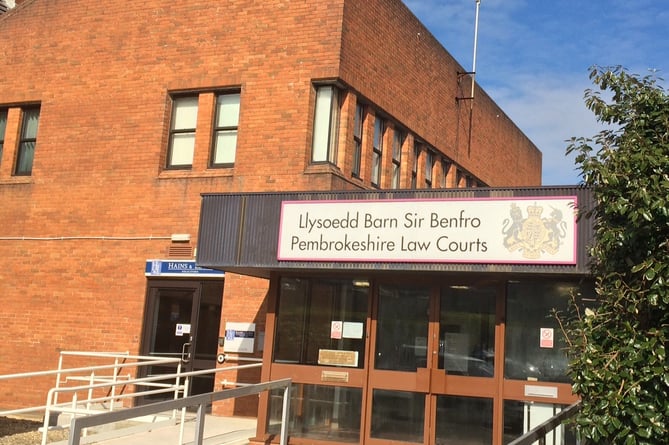News
Experimental forms and structures in modern essay writing

IN THE REALM of modern essay writing, a growing number of writers have been exploring experimental forms and structures to push the boundaries of conventional storytelling. These experimental essays, characterized by their unique and innovative approaches, offer readers a fresh perspective on traditional topics and challenge the way we perceive and interact with written narratives. Within these essays, authors employ various types of tones in writing to evoke different emotional responses and convey nuanced messages.
Understanding Experimental Forms in Essay Writing
Experimental forms in essay writing have evolved over time, breaking away from the rigid structures traditionally associated with the genre. Rather than conforming to a linear narrative format, experimental essays embrace unconventional techniques to deliver their message.
One of the key characteristics of experimental essays is their ability to surprise and engage readers. By subverting reader expectations and defying conventional storytelling norms, these essays encourage readers to explore new ways of thinking and experiencing narratives.
Creativity plays a crucial role in experimental writing. Writers are encouraged to think outside the box and explore uncharted territories to create unique and compelling essays. This emphasis on creativity allows writers to experiment with various narrative techniques, ultimately resulting in essays that push the boundaries of traditional storytelling.
When it comes to experimental forms in essay writing, there is no limit to the possibilities. Writers have the freedom to explore and employ a wide range of techniques to convey their ideas. For example, they may incorporate visual elements such as images, diagrams, or even interactive elements to enhance the reader’s understanding and engagement with the essay.
Furthermore, experimental essays often blur the line between fact and fiction, challenging the reader’s perception of reality. Through the use of imaginative storytelling, writers can create a unique blend of personal experiences, historical events, and fictional elements, offering readers a thought-provoking and immersive reading experience.
Additionally, experimental essays can also incorporate unconventional structures and formats. Writers may choose to abandon the traditional introduction-body-conclusion format and instead opt for fragmented narratives, nonlinear storytelling, or even choose to present the essay as a series of interconnected vignettes. This allows for a more dynamic and engaging reading experience, as readers navigate through different perspectives and ideas.
Ultimately, experimental forms in essay writing provide a platform for writers to challenge the status quo and explore new possibilities. By embracing unconventional techniques, writers can break free from the constraints of traditional storytelling and create essays that are not only intellectually stimulating but also emotionally resonant. So, the next time you come across an experimental essay, be prepared to embark on a journey that will expand your horizons and redefine your understanding of the genre.
The Impact of Structure in Modern Essays
The shift from traditional to modern structures has had a profound influence on the way readers perceive and engage with essays. As writers increasingly explore innovative structures, readers are exposed to new ways of comprehending and interpreting written texts.
Modern structures in essays focus on breaking away from linear narratives. By employing non-linear storytelling techniques, writers can challenge the notion of a single chronological order and instead create narratives that are fragmented or out of sequence. This fragmentation can enhance the overall impact of an essay by allowing readers to piece together information in their own unique way.
However, striking a balance between coherence and innovation is crucial. While challenging traditional structures can be captivating, it is important for writers to maintain a level of coherence that allows readers to follow the essay’s central themes and ideas. By doing so, writers can ensure that their experimental structures enhance the reader’s experience rather than detract from it.
One example of a modern essay structure that has gained popularity in recent years is the braided essay. This structure weaves together multiple narratives or themes, creating a rich tapestry of ideas. The braided essay allows writers to explore different perspectives or experiences, highlighting the interconnectedness of seemingly unrelated topics. This structure can be particularly effective when discussing complex or multifaceted subjects, as it provides a framework for exploring various angles and dimensions.
Another innovative structure that has emerged in modern essays is the use of visual elements. Incorporating images, charts, or graphs into an essay can add a layer of depth and engagement for the reader. Visual elements can serve as visual metaphors, reinforcing the essay’s themes or providing additional context. They can also break up the text, offering moments of respite and visual stimulation. However, it is important for writers to use visual elements judiciously, ensuring that they enhance the overall narrative rather than distract or overwhelm the reader.
Techniques for Writing Experimental Essays
Embracing non-linear narratives is one technique commonly employed in experimental essay writing. By weaving together various threads and narratives that may not follow a linear timeline, writers can create a more complex and multi-dimensional reading experience. This non-linear approach can provoke thought and encourage readers to actively engage with the text.
Another technique for writing experimental essays involves incorporating visual elements. By using images, illustrations, or multimedia elements, writers can enhance the essay’s impact and create a more immersive experience for the reader. Visual elements can convey emotions, concepts, or ideas that text alone may struggle to capture.
The use of fragmentation and disjunction is also prevalent in experimental writing. By deliberately interrupting the flow of the essay, writers can create a sense of disorientation or surprise, capturing the reader’s attention and challenging their preconceived notions. This technique can be particularly effective when exploring themes of identity, memory, or perception.
The Challenges and Rewards of Experimental Writing
While writing experimental essays can be liberating and exciting, it is not without its challenges. One of the primary hurdles writers face is the fear of breaking norms and venturing into uncharted territory. Traditional essay writing has long been governed by established rules and structures, making it difficult for writers to deviate from the familiar. However, by embracing experimentation, writers can release themselves from these constraints and discover new forms of expression.
Despite the challenges, the rewards of experimental writing are plentiful. Creating unique narratives that defy expectations can be deeply satisfying for both the writer and the reader. Experimental essays have the potential to captivate and engage readers on a deeper level, inviting them to question their assumptions and experience the world in fresh and unexpected ways. This unique connection between writer and reader is an essential aspect of experimental writing that fosters exploration and sparks intellectual growth.
To Sum Up
Overall, experimental forms and structures in modern essay writing offer a refreshing departure from traditional conventions. By embracing creativity, exploring innovative structures, and challenging reader expectations, writers can create essays that captivate, engage, and leave a lasting impact on their audience.
Crime
Man charged with strangulation and assault offences after October incident

A MAN recorded in court as having no fixed abode has appeared before magistrates charged with intentional strangulation and two further assault offences.
Michael Sudbury, 50, whose address was not read out in court, but in Herald records is Glan Hafan, Llangwm, appeared before the bench facing multiple charges.
The charges relate to an incident on 22 October 2025 and include:
- Intentional strangulation, contrary to section 75A of the Serious Crime Act 2015
- Common assault
- Assault by beating
No further details of the alleged incident were opened in court, and no plea was entered at this stage.
Sudbury was remanded on conditional bail, with the case listed to return to magistrates later this month.
Crime
Haverfordwest man sent to Crown Court on multiple serious charges

Defendant remanded in custody
A HAVERFORDWEST man has been sent to Swansea Crown Court to stand trial on a series of A 49-year-old Haverfordwest resident has been committed to Swansea Crown Court to face trial on multiple serious charges deemed too grave for magistrates to handle.
David Guy, of Market Street, Haverfordwest, appeared before Haverfordwest magistrates facing a series of allegations stemming from a single case. The charges, which were not detailed in open court, include:
- Assault occasioning actual bodily harm (ABH)
- A second count of assault
- Criminal damage
- An additional allegation of interpersonal violence
- A public order offence
Magistrates declined jurisdiction, determining that the matters exceeded their sentencing powers, and sent the case in its entirety to Swansea Crown Court.
Guy was remanded in custody pending his next appearance. The court register notes: “Sent to Crown Court for trial in custody – next hearing at Swansea Crown Court.”
A date for the initial Crown Court hearing will be set administratively. Guy will remain in custody until then.
The Pembrokeshire Herald will provide further updates as the case progresses in the Crown Court.
Crime
Castlemartin man back before magistrates over multiple alleged assaults

Defendant remanded on conditional bail ahead of further hearing
A CASTLEMARTIN man has appeared repeatedly before magistrates this month over a string A 40-year-old man from Castlemartin has made repeated appearances before magistrates this month in connection with a series of serious alleged offences, including assault occasioning actual bodily harm (ABH), intentional non-fatal strangulation, common assault, and criminal damage.
Anthony Alcock, of Pwll Street, Castlemartin, is facing six linked charges stemming from incidents said to have occurred earlier this year. These appear to relate to the same complainant in what is understood to be a single ongoing domestic abuse prosecution.
During recent administrative hearings at Haverfordwest Magistrates’ Court, Alcock did not enter pleas while matters of bail and case management were addressed.
Charges Include:
- Assault occasioning actual bodily harm (ABH)
- Intentional non-fatal strangulation
- Common assault on a woman
- Criminal damage in a domestic context
- Additional assault allegations involving the same complainant
- Breach of bail conditions
Alcock was initially granted conditional bail but was subsequently brought before the court on two occasions for alleged breaches. On those instances, magistrates remanded him in custody ahead of further hearings. He was later re-granted conditional bail, subject to strict conditions such as no contact with the complainant and exclusion from specified locations.
Magistrates have now declined jurisdiction, ruling that the case—particularly the more serious charges involving non-fatal strangulation—is too grave for summary trial. It has been committed to Swansea Crown Court for plea, trial, or sentencing.
No detailed evidence has been presented in open court at this preliminary stage. Alcock remains on conditional bail pending his next appearance at the Crown Court.
-

 Crime6 days ago
Crime6 days agoPhillips found guilty of raping baby in “worst case” judge has ever dealt with
-

 Crime5 days ago
Crime5 days agoKilgetty scaffolder sentenced after driving with cocaine and in system
-

 Crime5 days ago
Crime5 days agoHousing site director sentenced after failing to provide breath sample following crash
-

 Crime5 days ago
Crime5 days agoMotorist banned for three years after driving with cannabis in system
-

 News16 hours ago
News16 hours agoDyfed-Powys Police launch major investigation after triple fatal crash
-

 Education4 days ago
Education4 days agoTeaching assistant struck off after asking pupil for photos of her body
-

 Crime1 day ago
Crime1 day agoMan spared jail after baseball bat incident in Milford Haven
-

 News7 days ago
News7 days agoJury retires tomorrow in harrowing Baby C rape trial
























